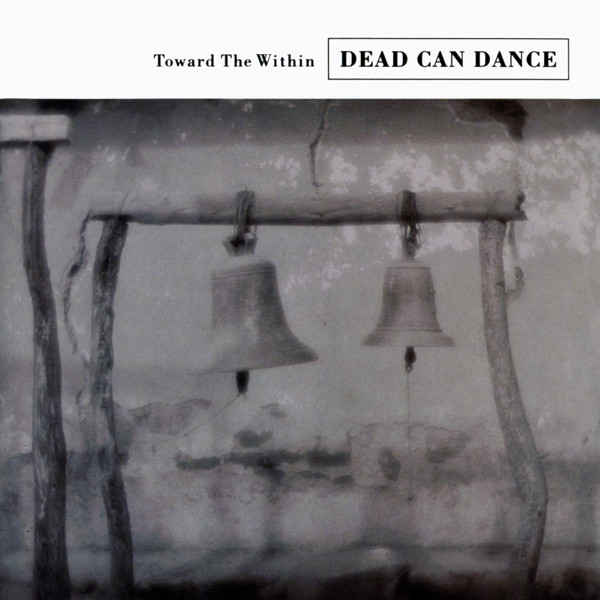Imagine a world where ancient rituals and forgotten melodies collide, where the whispers of the past mingle with the echoes of the future. This is the sonic landscape cultivated by Dead Can Dance, a band that has captivated audiences for over four decades with its hauntingly beautiful, ethereal music. Their journey, a breathtaking blend of world music, classical influences, and gothic sensibilities, has been a constant exploration of the human spirit, delving into the mysteries of the soul and the transcendental nature of sound.

Image: www.discogs.com
Dead Can Dance has become synonymous with a certain kind of mystical experience. Their music, characterized by its evocative melodies, layered vocals, and use of ancient instruments, invites listeners to embark on a profound journey inward. Their captivating performances have transcended mere concerts, transforming into immersive rituals, where the line between the performer and the audience blurs, creating a communal experience of shared emotion and spiritual awakening.
The Genesis of a Mystical Vision
Roots in the Australian Underground
The story of Dead Can Dance begins in Melbourne, Australia, in the early 1980s. Brendan Perry, an enigmatic singer and multi-instrumentalist, emerged from the burgeoning Australian post-punk scene, collaborating with Lisa Gerrard, a gifted Irish vocalist. Their musical partnership, forged in the crucible of Melbourne’s underground, birthed a unique sound that transcended genre boundaries. Their early recordings were raw and visceral, echoing the primal energy of their artistic origins.
A Tapestry of Cultures
From the outset, Dead Can Dance defied categorization. Their music drew on influences from diverse cultures, incorporating elements of ancient Celtic chants, Middle Eastern scales, and Gregorian plainchant. Their use of traditional instruments, such as the duduk, the ney, and the sitar, breathed life into melodies that were both timeless and eerie. This eclectic approach resonated with audiences who craved something beyond the confines of conventional music.

Image: www.discogs.com
The Journey Begins: Early Years and Breakthrough
“Spleen and Ideal” (1984) and the Seeds of a Mystical Sound
Dead Can Dance’s debut album, “Spleen and Ideal,” emerged in 1984, a potent mixture of gothic post-punk and evocative world music. Tracks like “The Host of Seraphim” and “Frontier” showcased the band’s early musical vision. Their haunting melodies and Gerrard’s otherworldly vocals began to create a sense of mystery and a haunting beauty that would become hallmarks of their sound.
“Aion” (1987) and the Embrace of the Ancient World
The band’s second album, “Aion,” marked a significant step forward in their evolution. It solidified their signature sound, delving deeper into the ancient world, exploring themes of myth, ritual, and the human yearning for transcendence. With songs like “Aion” and “The Wind That Shakes the Barley,” Dead Can Dance presented a tapestry of ancient melodies and intricate musical arrangements that drew listeners into their world.
“Within the Realm of a Dying Sun” (1988): A Symphony of Darkness and Light
“Within the Realm of a Dying Sun,” Dead Can Dance’s third album, became a pivotal moment in their career. Its dark and atmospheric sound resonated with a growing fan base, attracting international attention. The album’s title track, a mesmerizing exploration of cosmic themes and the ephemerality of life, became an anthem for the band’s growing legion of followers.
Exploring the Depths of the Human Soul
The Evolution of Dead Can Dance: “Into the Labyrinth” (1993) and “The Serpent’s Kiss” (1996)
As Dead Can Dance continued their journey, they delved even deeper into the human psyche. Their albums “Into the Labyrinth” and “The Serpent’s Kiss” reflected a shift towards more introspective and emotionally charged music. These albums saw the band exploring themes of love, loss, and the passage of time, creating music that was both intimate and universal.
A Mystical Journey: “Spiritchaser” (1991) and the Search for Ancient Truths
Dead Can Dance’s 1991 release, “Spiritchaser,” marked a turning point in their pursuit of ancient musical traditions. The album saw the band incorporating more traditional instrumentation and vocal styles from cultures around the world, creating a musical tapestry that was both evocative and profoundly moving. Songs like “The Waking World” and “Yulunga” brought a new dimension to their already rich musical landscape.
Redefining the Boundaries of Music
In the Shadow of the Past: “The Isle of the Dead” (2001) and “Anastasis” (2012)
As the new millennium dawned, Dead Can Dance continued to push the boundaries of their sound. The album “The Isle of the Dead,” released in 2001, featured a blend of traditional and contemporary elements, while “Anastasis,” released in 2012, marked a resurgence of the band’s power and artistry. Anastasis, meaning “resurrection,” reflected the band’s own reawakening, demonstrating their enduring creative force.
Towards The Within Dead Can Dance
Beyond the Physical: The Enduring Legacy of Dead Can Dance
The music of Dead Can Dance is more than just a collection of songs; it’s a journey of self-discovery, a sonic gateway to the intangible realms of the human soul. Their enduring legacy lies in their ability to evoke emotions, conjure visions, and transport listeners to a place beyond the ordinary. They have created a sound that is both ancient and timeless, a testament to the power of music to transcend cultural and temporal boundaries.
Whether you’re drawn to the haunting beauty of their melodies, the mystery of their lyrics, or the spiritual depth of their music, Dead Can Dance invites you to embark on a journey within, a journey that begins with the first notes and continues long after the music fades.





